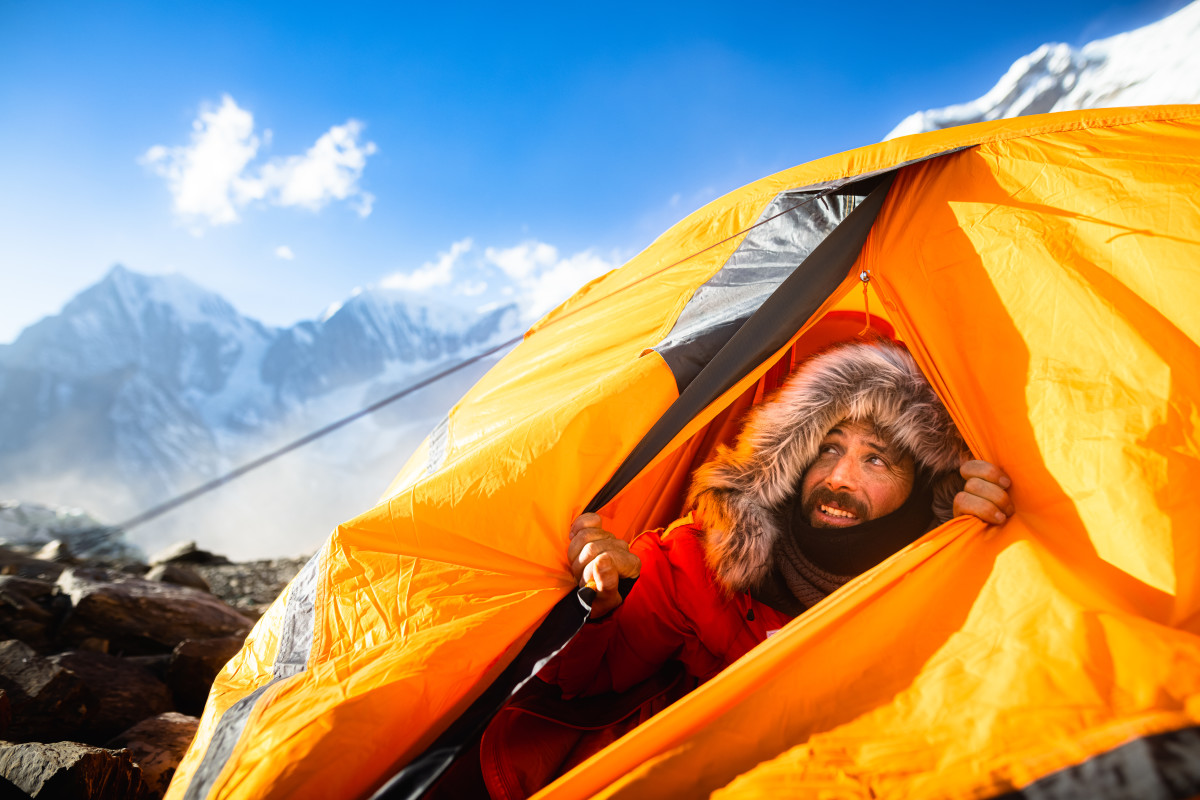
Alex Txikon, life at base camp

Our own Alex Txikon, who recently returned from his winter summit attempt on Annapurna, tells us, and we can see it in the beautiful shots of Andres Navamuel, the photographer who accompanied Alex on his recent adventure.
Alex, how do you spend your days at a base camp, especially during a winter expedition?
"If the weather is bad, life at a base camp in winter is really complicated! If, on the other hand, the weather conditions are good and there is not much wind, everything is much easier. Then there is the altitude that influences: if the camp is located at 4000 meters, the metabolism adapts more easily. Already at 5000 meters one feels fatigue, even for the simplest daily tasks. Then in winter there is often the problem of water: it is one thing to be able to replenish oneself from the streams flowing on the glacier, it is another to melt snow and ice every time. These are the main problems of life in a base camp in winter, but the most important thing is that when we are there, in winter and with all these problems, we are happy to be there, to spend time up there that seems interminable and those days that in the end, however, are very short, because, one task after another, one problem after another, you wake up in the morning and, almost without realizing it, you have already arrived in the evening and you are crawling into your sleeping bag!"

What are the logistical tricks for organizing a successful expedition?
"Expeditions, or at least my expeditions, are born when I feel butterflies in my stomach, when I really want to go! I decide to go to the mountains when I really feel like it. It's an irrational thing. It is a love. It is the desire for something "latro." To climb, to be there. So the first advice I can give is that you have to have a restlessness within yourself. You have to have the desire, the passion to go there. The logistical organization comes later, but it has to be well done so that you can turn that desire that made you leave into reality. You cannot think of leaving with little, with just enough. You need the right material and equipment, you have to plan carefully for financial sustainability. It's true that in mountaineering a lot is based on improvisation, but if in life and in mountaineering you improvise all the time, I don't think it's good...."

What about the advanced camps? How do you choose the right places to pitch your tents?
"When choosing camp locations you have to have the overall view of the mountain and the distances to be covered. You have to work out a route and figure out what altitude to start from for the final attempt at the summit and how to be ready to make it, then how to move around the mountain to gradually work out the route and complete the necessary acclimatization. It's all quite complex: as you gear up the route you have to calculate well the time and energy you will need to be able to set up the next camp, and, each time, you wonder if maybe that camp couldn't have been set up a little higher. But you also have to be careful, because, for example, if you put camp 2 at too high an elevation, then on subsequent climbs, you don't have the strength to get from base camp to camp 2 in one shot. This process is different for every mountain, and on the same mountain, things change between seasons: it's one thing to equip and fix the location of camps on Annapurna in the summer, it's another thing in the winter... Then, from my point of view, there's one basic rule that should always be respected, which is to put camps in a safe position, away from objective dangers."

How do we spend time at the high camps when the weather is bad?
"How do we spend time up there when it's bad? In the least uncomfortable way possible! If the weather is bad, our world is limited to the confined space of the tent: we have to spend all day and night there. We have to cook, melt snow to hydrate, set up equipment, etc. That's why it is essential to have reliable, well-structured tents like Ferrino's that provide the best shelter possible."
Are there any "secrets" to enduring in those conditions, not only physically but also mentally?
"Of course physical condition is important, but the psychological aspect is crucial! There are 8 billion people on this planet, and among those 8 billion, how many men and women are there who are physically stronger than me? I believe what makes the difference and has allowed me to complete my ascents is above all the psychological preparation and predisposition that I have been able to build over time. When you are on an expedition, the important thing is not to neglect anything. The key to an expedition, especially in winter, is managing emotions. You have to be able to endure, to constantly do our best, with full concentration, but without pressure! Pressure is not good, but the tension to always do things the best you can, that is essential. You have to be able to isolate yourself and focus on what you are doing and the end goal. That is the only way to get beyond fatigue and fear. Fear is the best companion to caution, it's true, but it's also true that it's extremely important to be focused, to be motivated, to be there with a smile, with passion, because we really want to be where we are."

Share this article